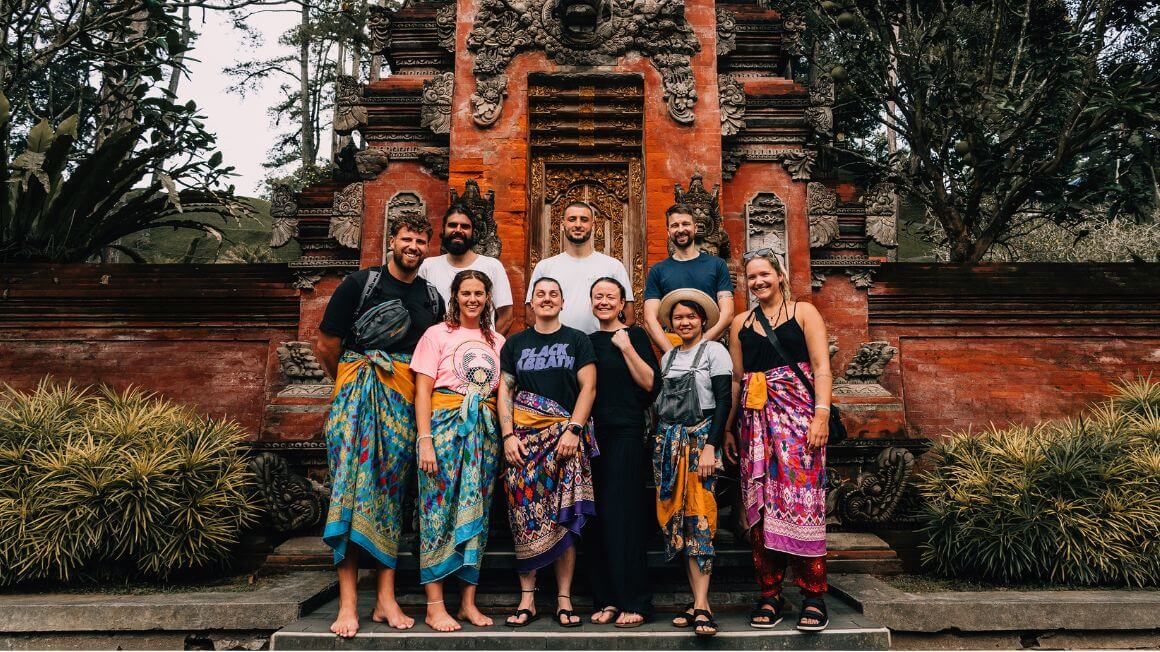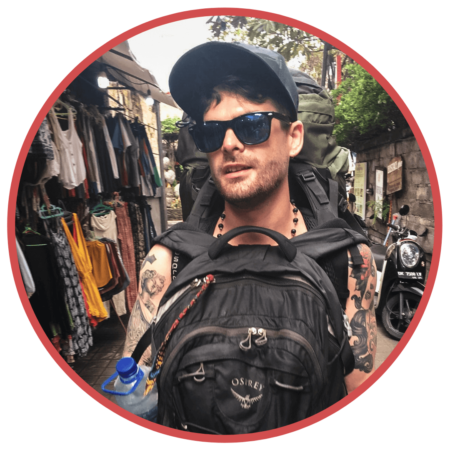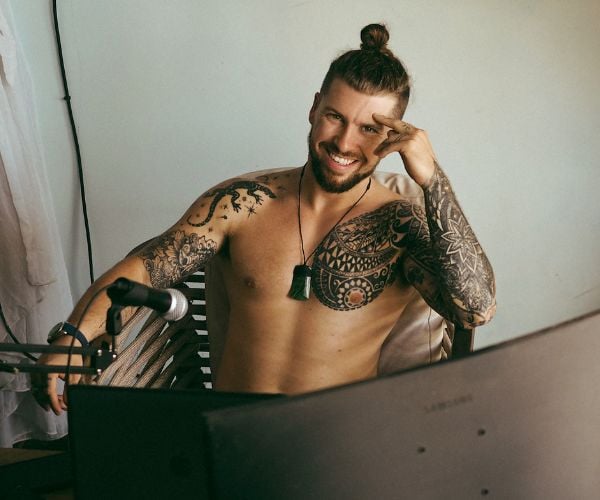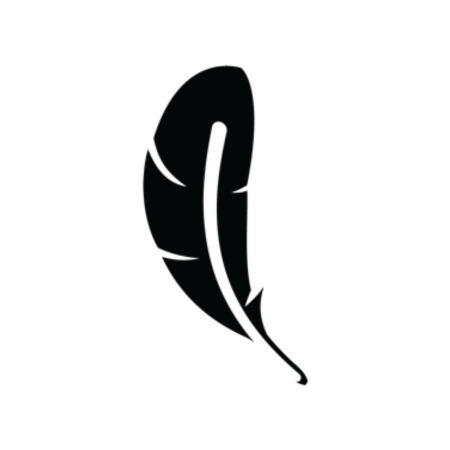The Broke Backpacker is supported by you. Clicking through our links may earn us a small affiliate commission, and that's what allows us to keep producing free content 🙂 Learn more.
You would be forgiven for kinda presuming that surfing is a lifestyle you’re kinda born into. That really, it’s only for the sun-kissed teens growing up right by the beach. But think again because surfing, like any hobby, is something that anybody can get into at any time.
So whether you’ve always dreamt of catching a wave or just want to shake up your routine a bit, learning to surf in your 30s is not only possible, it might just prove to be one of the most rewarding things you ever do.
From overcoming that initial fear to finding the best beginner-friendly surf retreats, this guide breaks down everything you need to know to start your surfing journey in your 30s.
Spoiler alert: there’s no age limit for stoke…
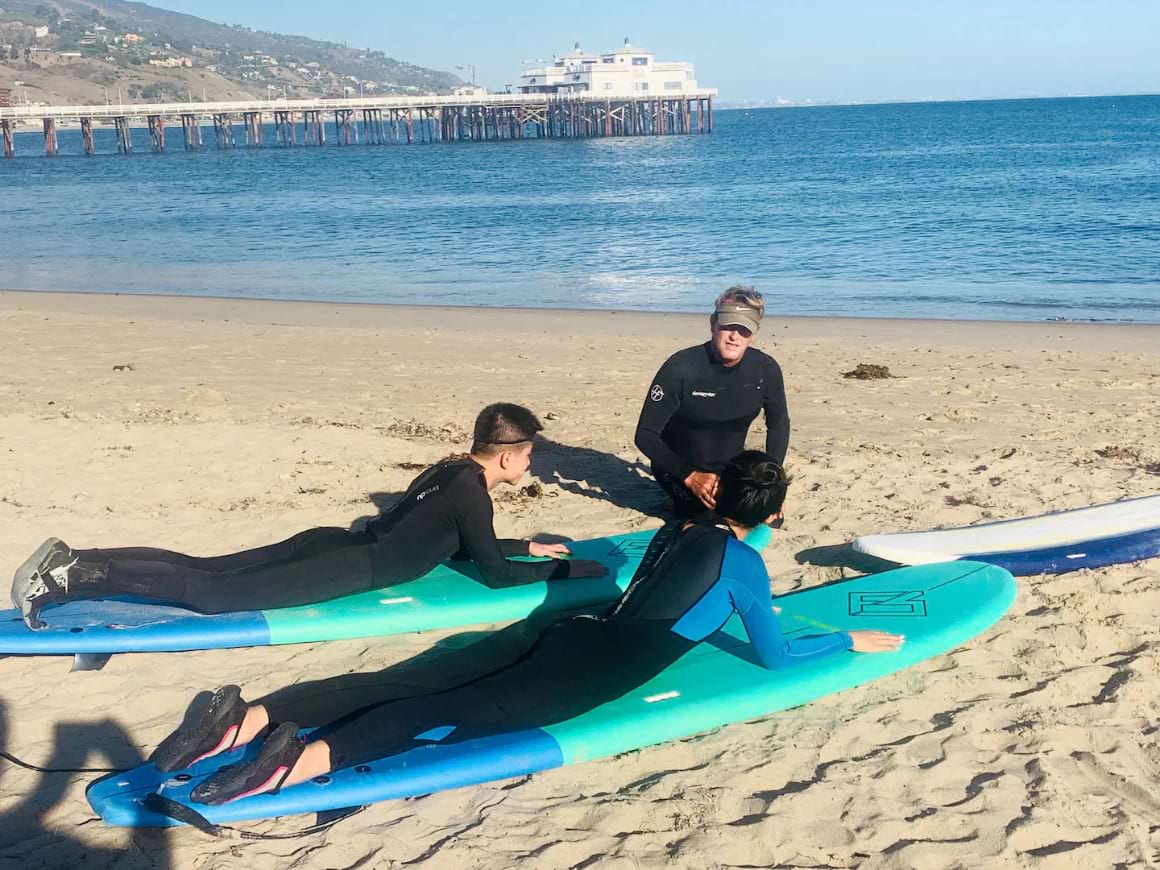
The Broke Backpacker is supported by you. Clicking through our links may earn us a small affiliate commission, and that's what allows us to keep producing free content 🙂 Learn more.
Why Learn to Surf in Your 30s?
For many of us, our 30s are a decade of rediscovery. We’re more self-aware, more confident, and maybe more open to trying things that you once put on the back burner. Also, statistically speaking, we have a few more bucks spare to spend on new hobbies and passions.
Why surfing though? Well for one it challenges you physically, keeps you fit, connects you to nature, and forces you to live completely in the moment — something that seems to become ever rarer with a busy, work/family oriented 30-something lifestyle.
Plus, let’s be honest: adulting is seriously fucking stressful. Surfing though? That’s therapy, adrenaline, and cardio all rolled into one salty, sun-soaked package.
Finally, let’s also remember that in some unfortunate cases, the 30’s even represent something of an early middle age crisis and thankfully surfboards are a lot cheaper than sports cars.
Is It Too Late to Learn?
Let’s bust this myth right here right now: you’re not too old to learn to surf. It’s never too old to learn to surf. In fact, adult learners often progress much faster because they’re more focused and intentional than younger surfers. Of course, you may not bounce back from the inevitable wipeouts like a 19-year-old, but you’re likely more patient, coachable, and committed.
Sure, your pop-up might be a bit creaky at first. But surfing is about flow, not finesse. It’s about effort and consistency — two things you’ve hopefully got a handle on by now.
What to Expect As a Beginner Surfer in Your 30s
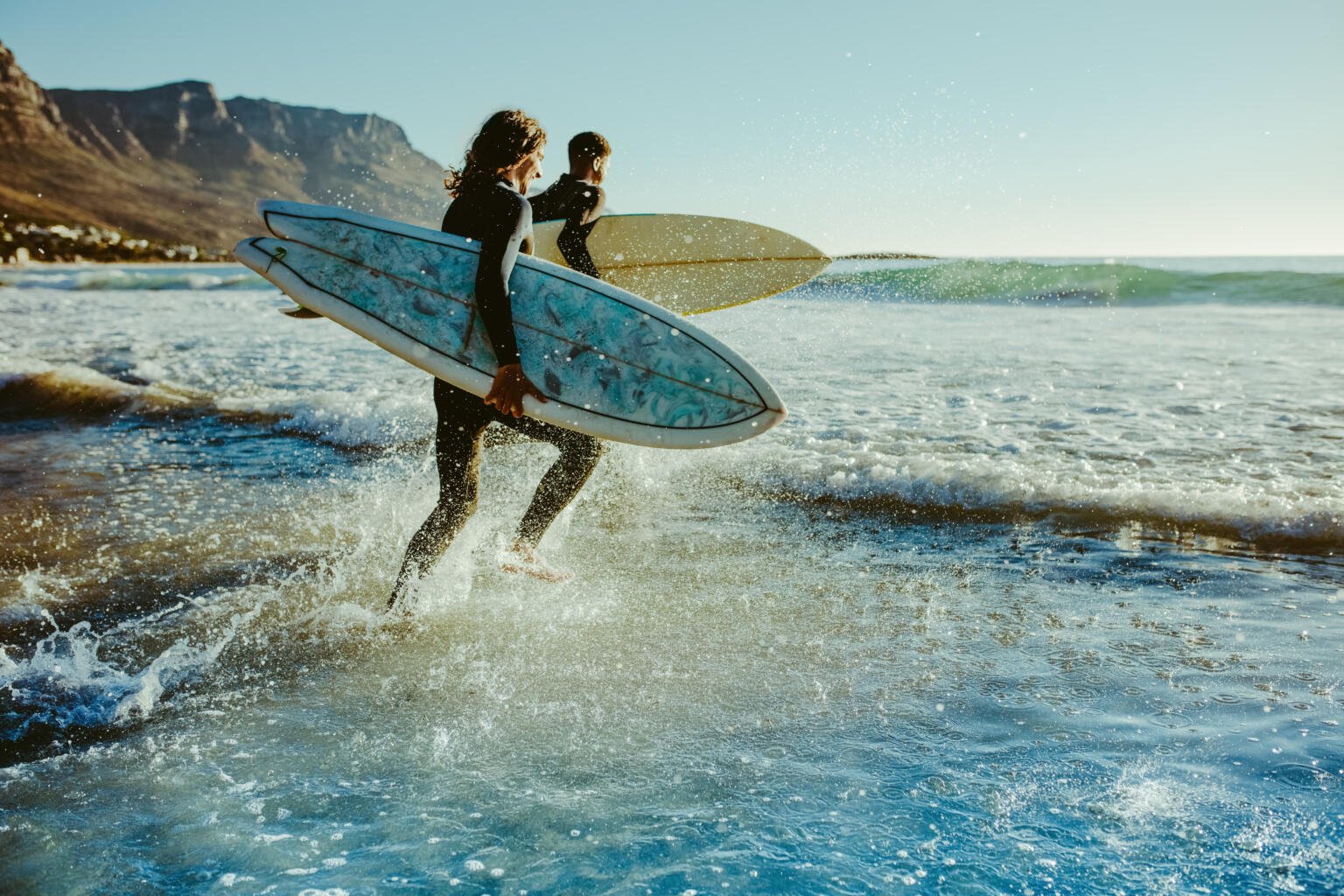
Before you dive headfirst into the surf, it helps to know just what you’re getting yourself in for.
1. It’s Hard — But it’s Worth It
Surfing is awfully humbling. You’ll paddle like mad, get wiped out by ankle-high waves, and fall far more times than you can count. In fact, it’s the only time as an adult that I have struggled to even stand upright properly. But then sooner or later you’ll catch your first real wave, and everything will click.
That’s the moment you’ll be hooked for life.
2. You’ll Need Core Strength and Cardio
Even beginner-level surfing is a full-body workout. You don’t need to be ripped, but some basic fitness (swimming skills are a must) will make your life a whole easier. Yoga, running, and bodyweight exercises all help.
Remember that surfing will get you fitter, but in order to get through the first few difficulty lessons it pays to be in semi-acceptable shape. If you are thinking about going from couch to wave, maybe spend a month or two building your core or doing some cardio down at the gym or with a personal trainer first?
3. You Don’t Need Fancy Gear
To start, you just need a soft-top beginner board, a decent wetsuit if you’re going into colder water, and plenty of sunscreen.
Most surf camps and surf schools provide all the equipment you need, so if you go this route you don’t need to invest in any gear straight away. Yay!
Best Places To Learn to Surf in Your 30s
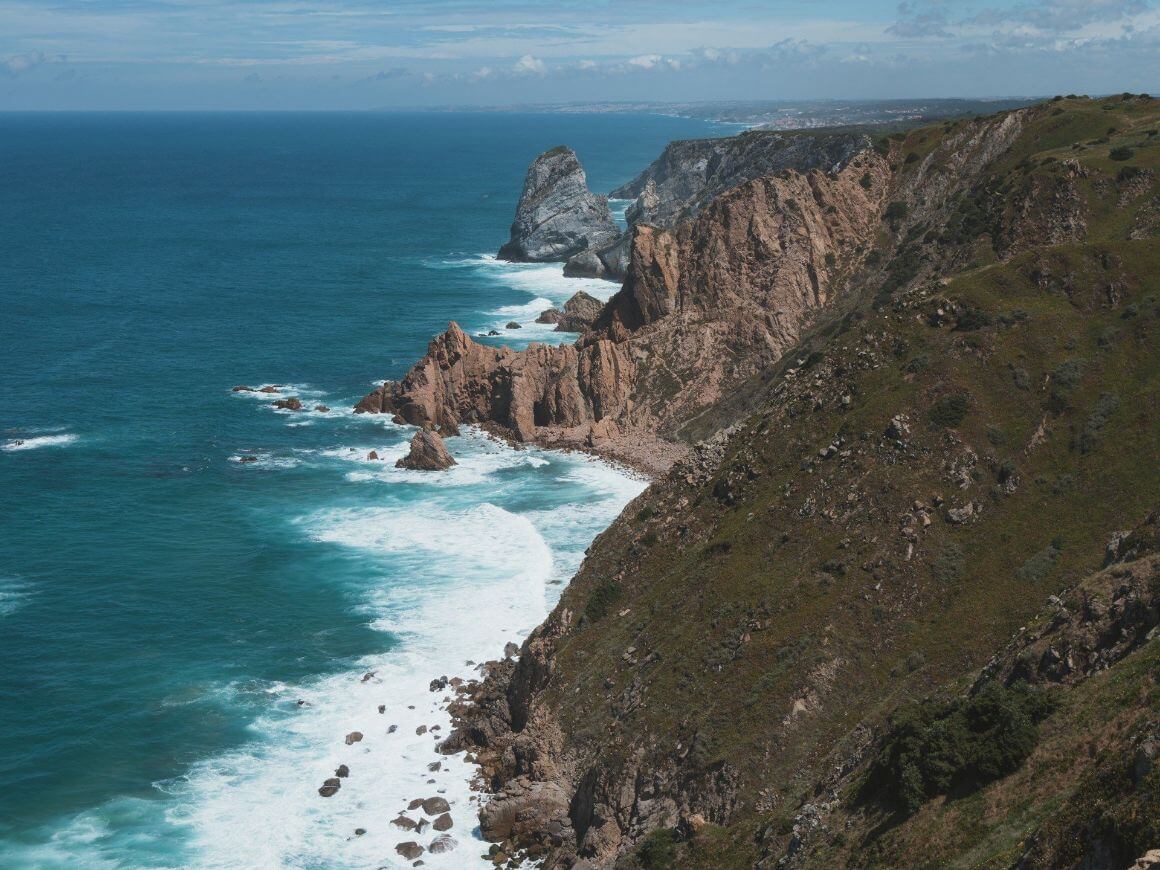
If you live in Birmingham (either the one in the UK or the one in Alabama) then it will be somewhat difficult to learn to surf, as the nearest wave is hundreds of miles away. So quite clearly, the where is of paramount importance here. The best place to learn to surf is of course, at the beach…
But there is more to it than this as some beaches are much better for learners than others. For adult beginners, you want the following;
- Consistent, mellow waves
- A safe, sandy bottom (no reef or rocks)
- Quality instruction
- A chill atmosphere—no judgment, just vibes
Here are some of the best destinations for beginner surfers in their 30s:
1. Portugal – Ericeira or Arrifana
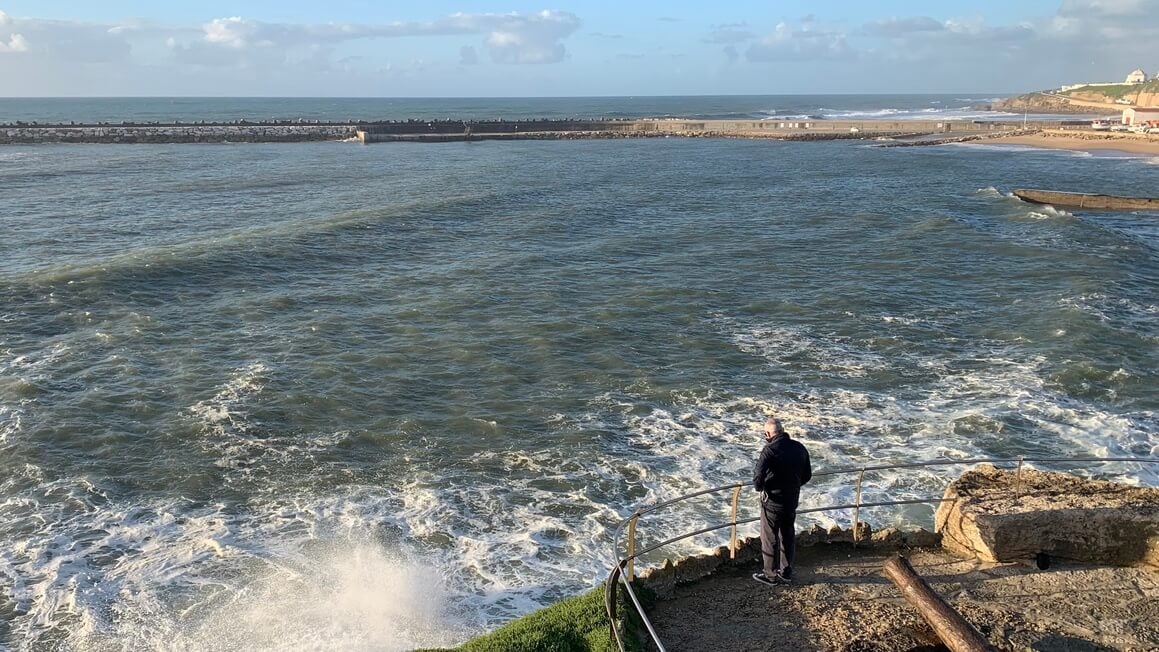
Portugal’s Atlantic coast is Europe’s surf mecca and caters to all levels. You’ll find affordable surf camps, great weather, and waves you can grow into.
Portugal is also an affordable destination and there are abundant, reasonably priced flights from all over Europe, North Africa and the East Coast or the US.
2. Bali – Canggu or Kuta
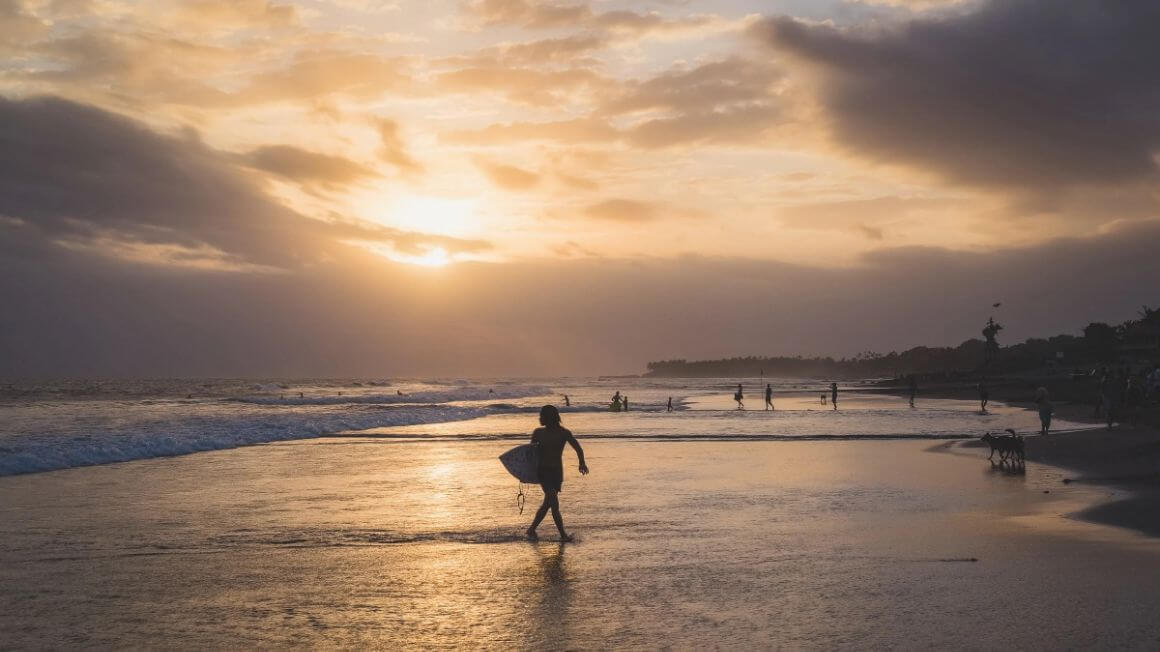
Bali has been a top surfing destination for years now and with good reason. Warm water, cheap living, and surf schools on every corner. Plus, it has the kind of laid-back energy that encourages you to take your time and have fun.
Because of its remote location and relatively low day to day cost, Bali is a great destination to take a month or so to learn to surf.
3. Costa Rica – Nosara or Santa Teresa
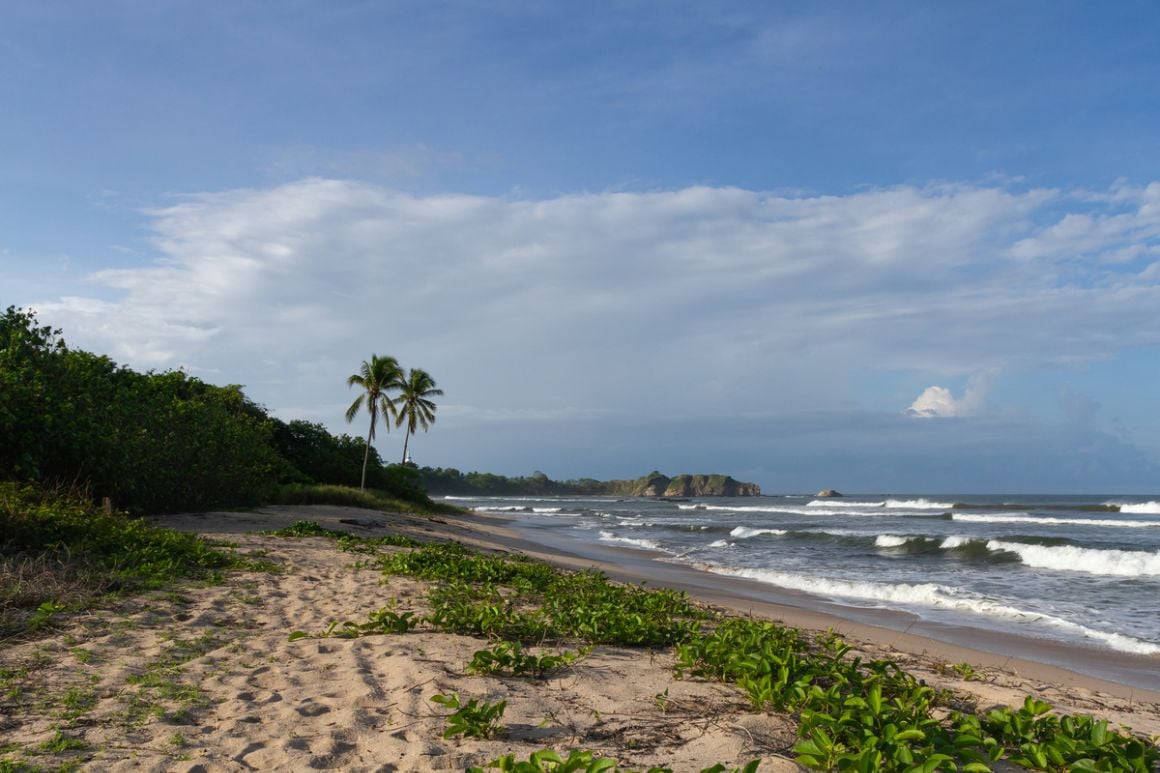
This Central American gem offers tropical perfection and a thriving surf culture. Nosara, in particular, is known for its welcoming beginner waves and wellness-focused retreats.
However, Costa Rica has acquired a reputation as something of an wellness-influencers hellscape of late and is a lot more pricey than you might expect.
4. Sri Lanka – Weligama
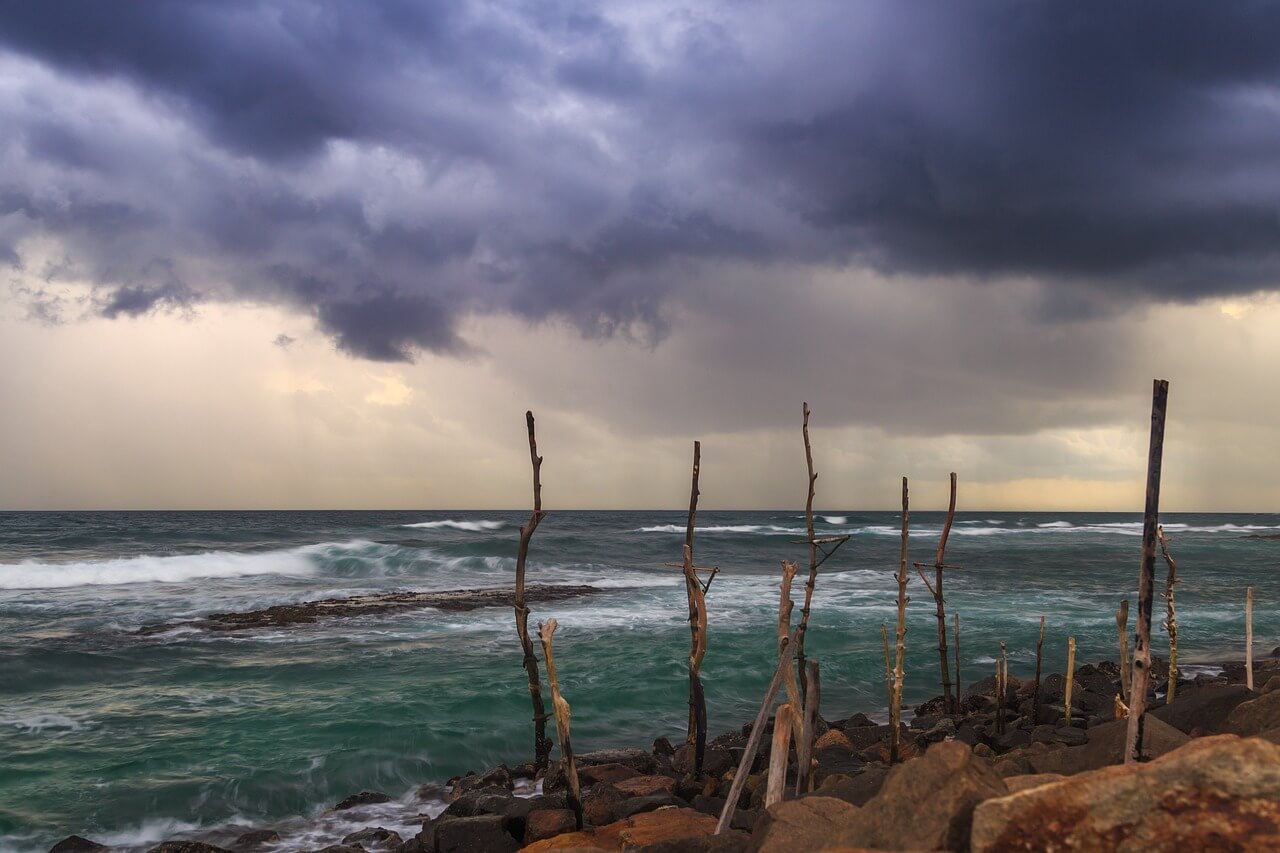
Affordable, uncrowded (for now), and chock full of long rolling waves—Weligama is ideal for learning to surf, especially if you’re looking for a more off-the-beaten-path vibe.
Despite some turbulent times of late, our tip is for Sri Lanka to really blossom as go-to surf destination over the coming years.
Why a Surf Camp or Surf Retreat is the Best Way to Start
Trying to teach yourself how to surf is like trying to learn a new language without ever speaking it. You could do it, but you’ll progress painfully slowly. Furthermore, while there are now plenty of pretty good language apps which you can use in your toilet breaks, you can’t really learn to surf via an app or inside a toilet cubicle.
In our view, taking an intense, crash course at a surf camp or surf retreat is the gold standard for adult beginners wanting to learn.
Here’s what you’ll typically get at a quality surf retreat:
- Professional, dedicated instruction tailored to beginners
- Daily surf sessions in ideal conditions
- Video analysis to improve technique
- Group camaraderie (trust us, bonding over wipeouts is real)
- Yoga and wellness sessions (because your muscles will need it)
- Accommodation, meals, and logistics sorted—so you can focus on learning
- Motivation and time management…no lying in bed while the waves are breaking
Don’t get me wrong, you can always practice, improve and develop on your own terms and in your own time, but when you are at that vital beginner stage needing to get over those first hurdles a surf camp is without a doubt, hands down the way to go.
Our Top Surf Retreat Pick: Rapture Surfcamps
If you’re serious about learning to surf in your 30s and want an experience that blends fun, comfort, and real progress, then we highly recommend Rapture Surfcamps.
There are loads of different surf camps and surf retreats out there but there are several reason why we rate these guy;
Why Rapture?
- Beginner-Focused Instruction: Their coaches are patient, supportive, and genuinely invested in your progress.
- Global Locations: Choose between Bali, Portugal, Nicaragua, and Costa Rica—each with beginner-friendly waves and great vibes.
- Inclusive Packages: They take care of everything—meals, surf gear, airport transfers—so all you have to do is show up.
- Welcoming Community: You’ll meet fellow late-blooming surfers, solo travelers, and adventure seekers from all over the world.
- Affordable Rates: Their retreats are surprisingly budget-friendly, especially considering the quality of instruction and accommodation.
- Consistency: Every location, every teacher and every camp they run all hit the same high standard.
Whether you want a surf-yoga blend, a digital detox, or just a week of soaking in salty sunsets, Rapture Surfcamps offer a curated experience that’s perfect for adult beginners.
Final Thoughts
So there we have it. As you can see learning to surf in your 30s isn’t just about mastering a new sport, It’s about shaking off limitations, reconnecting with your body, and rediscovering what it feels like to be completely out of your comfort zone — all in the best of all possible ways.
Sure, you might be left a bit sore and you’ll definitely look ridiculous trying to stand up at first. But every surfer, young or old, has been there.
So book that surf retreat, pack your bags and get ready to paddle out—because your surfing story is just beginning.
Buy Us a Coffee!
A couple of you lovely readers suggested we set up a tip jar for direct support as an alternative to booking through our links, since we’ve decided to keep the site ad-free. So here it is!
You can now buy The Broke Backpacker a coffee. If you like and use our content to plan your trips, it’s a much appreciated way to show appreciation 🙂


